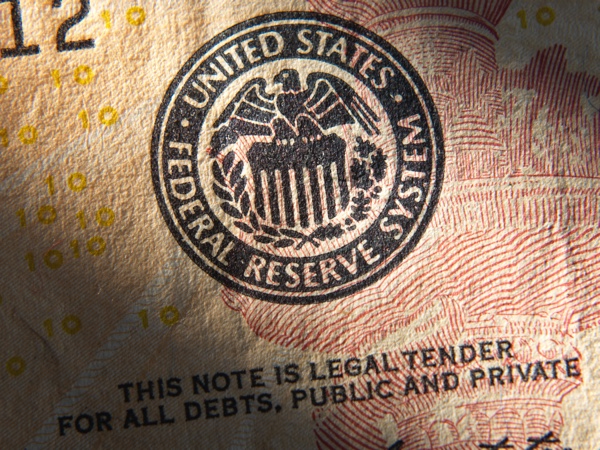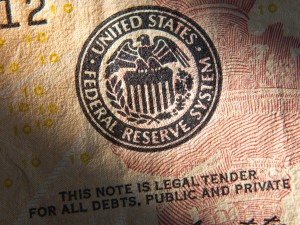
Wednesday January 31: Five things the markets are talking about
Month-end USD sales and event risk of today’s Fed’s interest rate decision (2 pm EDT) have seen a dramatic pick-up in realized volatility that’s given implied vols another boost this week.
Ahead of the U.S open, Euro stocks have stemmed the bleeding; Asian bourses were mixed, even as the EUR (€1.2454) and JPY (¥108.69) both climbed.
The U.S dollar has found little support from President Trumps first State of the Union address last night as his speech offered few clues on U.S policy.
At today’s FOMC meeting, officials are likely to keep interest rates steady, but they could provide clues on whether their 2018 outlook has changed amid a steadily expanding economy.
Up to now, many investors have doubted the Fed’s dot plot; initially for good reason as central-banker predictions on the pace of rate hikes were not as aggressive as Fed officials predicted. However, that was last years thinking.
In the past month, the market has gotten on board with the prospect that the Fed just might follow up last year’s three-rate hikes with three more in 2018.
Fed-fund futures now show a +36% probability that three +25 bps increases are to happen in 2018, versus +25% a month ago. Meanwhile, for just one hike it’s slumped to +10% from +23% and for two hikes dropped to +29% from +36%.
Conversely, bets have surged that three may be ‘too conservative’; the probability of four rate increases is at +19%, versus +8.7% a month ago.
1. Stocks rebound, on pace for monthly gains
Global stocks and bonds mostly rebounded overnight, keeping major indexes on track for solid monthly gains.
Ahead of the U.S open, investors have been analysing President Trump’s first State of the Union address, a slew of corporate earnings and Janet Yellen’s final meeting as leader of the Federal Reserve.
In Japan, the Nikkei fell for a sixth consecutive session overnight, with most sectors in negative territory. The Nikkei was down -0.8%. The index is still up +1.5% this year, it has fallen -4.5% from the 26-year peak hit a week ago. The broader Topix has declined -1.2%.
Down-under, Aussie shares shrugged off lower oil prices and rising bond yields to end the overnight session higher as real estate stocks strengthened. The S&P/ASX 200 index gained +0.3%. In S. Korea, the Kospi climbed +0.2%.
In Hong Kong, stocks reversed earlier losses to end higher overnight, posting its best month in nearly three-years, helped by gains for financial and services firms. At close of trade, the Hang Seng index was up +0.86%, while the Hang Seng China Enterprises index rose +1.29%.
In China, stocks ended the session mixed, with the blue-chip index recouping earlier losses to close higher, aided by a bounce in real estate and consumer firms. At the close, the Shanghai Composite index was down -0.19%, while the blue-chip CSI300 index was up +0.48%.
In Europe, regional indices are trading mostly higher, rebounding from yesterday’s steep declines on the back of upbeat earnings and a small retreat in bond yields.
U.S stocks are set to open in the ‘black’ (+0.3%).
Indices: Stoxx600 +0.1% at 396.6, FTSE +0.1% at 7592, DAX +0.3% at 13235, CAC-40 +0.2% at 5483 , IBEX-35 +0.2% at 10452, FTSE MIB flat at 23874 , SMI flat at 9433, S&P 500 Futures +0.3%

2. Oil drops for a third day, gold prices higher
Oil prices are under pressure for a third consecutive day, but remain on track for its biggest gain in January in five-years, and this in spite of data that shows that U.S stocks rose more than expected last week.
Brent is down -49c at +$68.43 a barrel, after touching a two-week intraday low earlier overnight. U.S West Texas Intermediate (WTI) futures are down -39c at +$64.11.
Yesterday, U.S crude fell -1.6% to close at +$64.50 a barrel, far outpacing a -0.6% drop in the price of Brent.
Note: Prices of WTI and Brent are still on track for a fifth month of gains and Brent is set for its largest percentage increase in the month of January since 2013, with a rise of +2.7%.
Providing price pressures are U.S producers increasing their rig count – energy companies added 12 oil rigs last week, the biggest weekly increase in 11 months.
A report from the API Tuesday shows that U.S crude stocks rose by +3.2m barrels last week. Expect dealers to take their cue from today’s U.S DoE report (10:30 am EDT) – the report is expected to show an increase in inventories for the first time in 11-weeks.
Ahead of the U.S open, gold prices have rebounded a tad as the U.S dollar resumes its downtrend. Spot gold is up +0.4% to +$1,342.80 per ounce.
Note: Many believe that gold bullion remains vulnerable to weakness ahead of the Lunar New Year. On Tuesday, the ‘yellow’ metal touched its lowest since Jan. 23 at +$1,334.10 an ounce.

4. Sovereign yields remain elevated
U.S government bonds continue to gyrate near this weeks low prices prints, pushing sovereign yields stateside a tad higher towards their four-year high yield print.
U.S yields, in particular, have hit fresh four-year high yields this month as investors have bet on a pickup in growth and inflation following the passage of the U.S corporate tax cuts.
The great debate – the rise in U.S sovereign yields has certainly raised a number of concerns about the durability of the stock rally, while others have said that U.S corporate earnings growth looks solid enough to support further stock gains.
The Fed is expected to send an upbeat message in its statement later today as market based inflation expectations and the growth outlook have improved since the last meeting. The Fed’s ‘dot plot’ forecasts three rate increases for 2018.
The odd’s for a Fed hike in March – the first meeting this year that has a press conference and fresh projections outlook, is around +70%.
The yield on U.S 10-year Treasuries fell -2 bps to +2.70%. In Germany, the 10-year Bund yield has declined -1 bps to +0.67%, the first retreat in a week, while in the U.K, the 10-year Gilt yield declined -1 bps to +1.46% and the biggest fall in a fortnight.
Note: In Japan, the Bank of Japan (BoJ) increased its purchases in 3-5 year JGB’s by +¥30B to +¥33B – the first increase in six-months.

4. Dollar on the defense
The once ‘mighty’ USD remains on the back foot outright vs. G10 currency pairs and is poised to close out its worst monthly performance in 24-months.
The EUR/USD is slowly edging back towards the psychological €1.25 handle as dealers discount some disappointing Euro inflation data (see below), while believing (pricing-in) that the ECB would tighten policy aggressively down the road. The techies see €1.25 as key resistance in the short-term.
The GBP (£1.4138) trades atop of its overnight lows, mostly weighed down by report the E.U Commission officials had rejected the City of London’s proposal to strike a post-Brexit free trade deal on financial services.
USD/JPY (¥108.82) remains little changed ahead of the U.S open.
Elsewhere, South Africa’s rand (ZAR $11.8285) has gained +1% – its strongest rate outright in almost three-years.

5. Eurozone inflation continues to lag, despite robust economic growth
Despite some stellar job numbers and stronger domestic growth in Europe, data this morning once again highlights a missing ingredient in the eurozone’s expansion – an acceleration in the rate at which consumer prices are rising.
The E.U said prices were +1.3% higher in January than a year earlier, the lowest rate of annual inflation since July 2017 and well short of the ECB’s target, which is just below +2%.
Some of that decline had been expected by the ECB, since energy prices jumped at the turn into 2017, and those sharp rises have not been repeated this year.
Note: But not all of the weakness in inflation is down to energy prices. According to Eurostat, services prices rose at an annual rate of +1.2%, unchanged for four straight months. Overall, the core rate of inflation edged up to +1.0% from +0.9%.
The ECB continues to expect that inflation will eventually rise, driven in large part by a rise in wages as unemployment falls and as skilled workers become scarce.
Other data this morning showed that eurozone employment continues to run strong. In Germany, Europe’s powerhouse, January unemployment rate has hit fresh its post-unification low of +5.4%, while the eurozone matches its December 2008 lows of +8.7%.


